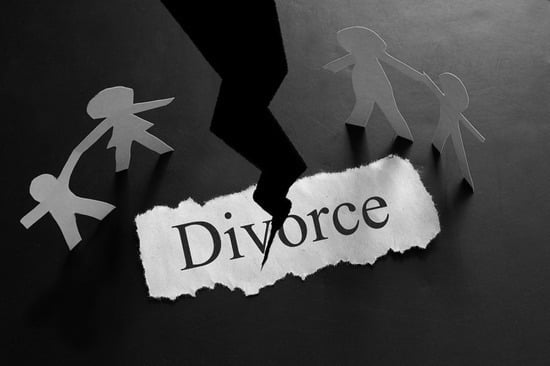When parents go through a custody dispute or other family law proceeding, a common question is how, and if, a child’s voice can be heard in court. Can a child testify? At what age? Will the judge talk to the child privately? North Dakota law provides specific guidelines for these situations. This article explains how North Dakota courts assess the competency of child witnesses, ensure children understand the truth and oath, and consider a child’s testimony. It also explains the role of professionals like guardians ad litem and parenting investigators in providing the court with information from a child.
Competency of Child Witnesses in North Dakota, Intelligence Over Age
North Dakota does not set a strict minimum age for a child to testify. The focus is on the child’s ability to observe, remember, and relate events, in other words, the child’s intelligence and capacity, not just chronological age. The North Dakota Supreme Court recognized over a century ago in 1907 that even an eight year old victim was competent to testify, emphasizing that age alone is an arbitrary measure of competency. Decades later, the Court upheld the testimony of a six and a half year old victim in State v. Oliver, reaffirming that once a child witness is deemed competent to testify, any issues with how believable or consistent the child’s testimony is are for the factfinder to decide, not a reason to automatically bar the child’s testimony.
North Dakota’s approach is that every person is competent to be a witness unless a specific rule says otherwise, which applies to children as well. This principle is codified in Rule 601 of the North Dakota Rules of Evidence, so the court starts with the assumption a child can testify, subject to the safeguards below.
Assessing Truthfulness and the Oath
Before allowing a child to testify, the judge usually conducts simple voir dire, preliminary questions, to ensure the child understands the difference between truth and lies and the importance of telling the truth in court. The child does not need to know technical terms or adult concepts like perjury, but must be able to distinguish truth from fantasy and appreciate that they must tell the truth. North Dakota Rule of Evidence 603 requires every witness to take an oath or affirmation to testify truthfully, which can be done in a child friendly manner, for example promising to tell the truth.
The key is that the child must be able and willing to testify truthfully. Courts look for evidence that the child understands what it means to tell the truth versus a lie and feels obligated to be truthful. A judge might ask questions like, “What happens if you tell a lie?” or “Is it good or bad to tell the truth?” If the child demonstrates sufficient understanding and the ability to communicate, the child will be allowed to testify under oath.
North Dakota courts have permitted very young children to testify when these conditions are met. In State v. Wiest, for instance, the prosecution called children aged 5, 8, and 9 to testify regarding abuse allegations. The fact that a five year old was permitted to take the stand shows there is no bright line age cutoff. What matters is the child’s maturity and understanding. Questioning should use simple language and a non intimidating setting.
Once a child is testifying, any issues about whether the child’s testimony is shaky, inconsistent, or influenced go to weight and credibility, not admissibility. The judge will decide how much to believe the child’s story. Courts have also observed that there is not a proven link between a child’s age and honesty. A mature, honest seven year old may be more reliable than a confused fourteen year old. North Dakota favors a case by case evaluation.
How a Child’s Testimony Is Heard
- Direct testimony by the child in court. A child found competent can testify like any other witness. In custody trials this may include describing life at each parent’s home, their feelings, and with whom they would like to live. Courts are often reluctant to have children testify in front of parents, since it can be traumatic. Judges often prefer alternatives such as in chambers interviews or using a guardian ad litem.
- In chambers interview, judge’s chambers. State Rule N.D.R.Ct. 8.13 allows a judge to interview a child privately during a custody proceeding with parents’ consent. Parents are not allowed in the room, but attorneys may attend. The judge may ask counsel to submit questions or allow limited questioning by counsel. A court reporter records the interview for a transcript.
- Guardian ad Litem, GAL, or Parenting Investigator reports. Under N.D.C.C. § 14-09-06.4, the court may appoint an attorney guardian ad litem to advocate for the child’s best interests. The GAL interviews the child and others, then makes recommendations, often by report or testimony. The GAL informs the court of the child’s statements and preferences, but advocates for best interests, not necessarily stated wishes. Similarly, N.D.C.C. § 14-09-06.3 allows appointment of a parenting investigator, also called a custody evaluator, who meets with the child and parents, observes interactions, consults teachers or doctors, and prepares a report with findings and recommendations. Either party may call the investigator to testify and be cross examined. Through this testimony or report, the child’s statements enter the record, and the professional can comment on maturity and possible parental influence.
- Therapists and other professionals. A counselor, psychologist, or doctor may testify about the child’s mental and emotional well being. A therapist repeating a child’s statements is hearsay unless an exception applies. Statements made for diagnosis or treatment can be admitted under D.R.Ev. 803(4), the medical treatment exception.
Conclusion
North Dakota courts balance letting a child be heard with protecting the child from harm. Every person, including a child, is presumed competent to testify if they understand truth and can communicate. In family cases, alternate routes like GALs and in chambers interviews are common to reduce trauma. Safeguards such as hearsay rules and the requirement of parental consent for interviews help ensure fairness. Parents should support the child, be honest and cooperative, and allow professionals to bring the child’s voice forward. The court’s goal is the child’s best interests, and hearing from the child in an appropriate way is often part of that determination.
If you are considering a custody case in North Dakota, consult an experienced family law attorney. Contact the SW&L family law team at 701-297-2890 or email [email protected].
The information in this article and on this website is for informational purposes only. Do not rely on this website as legal advice. Please refer to the full disclaimer here.




